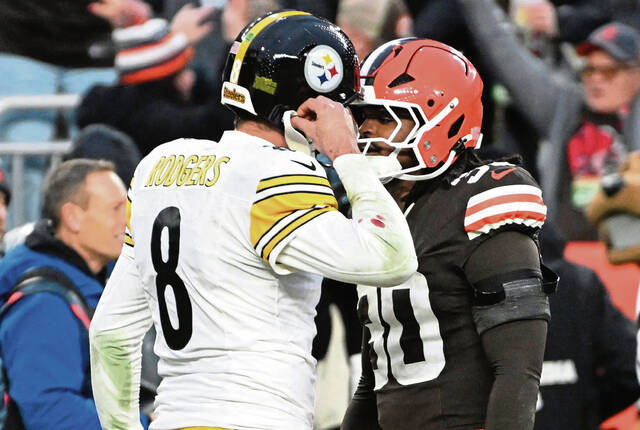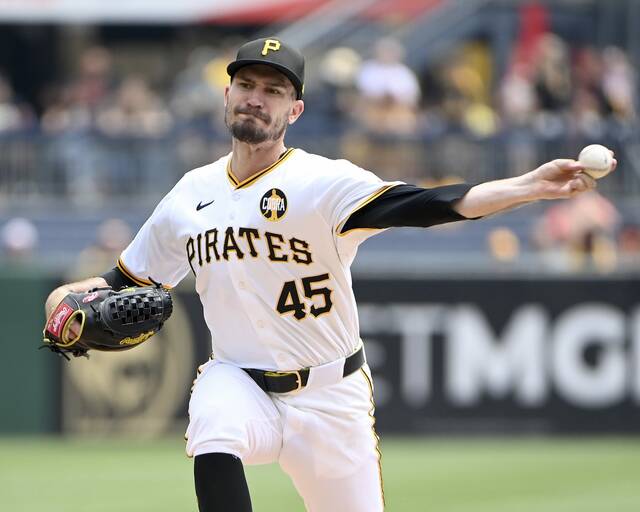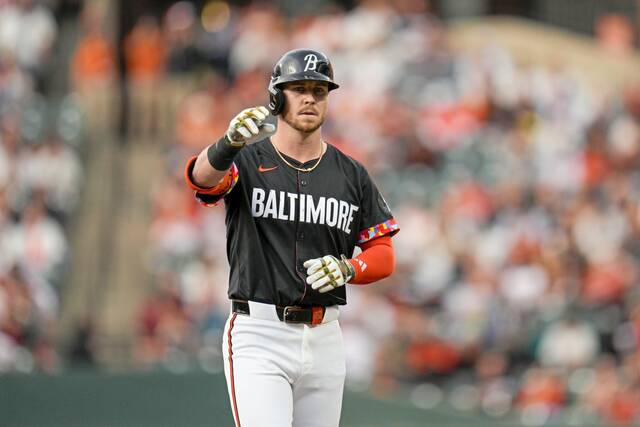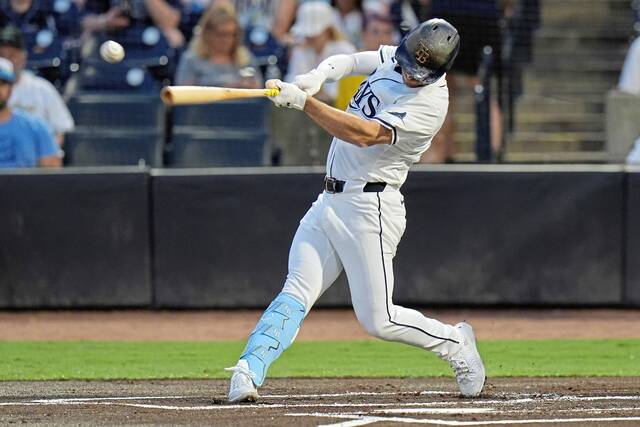Most days, Derek Shelton is loathe to discuss lineups. The Pittsburgh Pirates manager used so many different batting orders last season — 57 in 60 games — that it became a running joke: As many varieties as Heinz.
On Tuesday, however, Shelton was in a good mood and delved into the topic of how he factors analytics and personnel into his batting order, and why his spring training lineups might not reflect the regular season.
“This may shock you,” Shelton said, “but I actually put a ton of thought into it.”
One spot that doesn’t require much thought is the two-hole, not since Ke’Bryan Hayes moved there last Sept. 16. Over a dozen games, the rookie third baseman hit .442/.510/.767 for a 1.278 OPS with five doubles, three home runs and six RBIs.
“It used to be, the old adage was that your best hitter hit third so he hits in the first inning for years,” Shelton said. “Now, we’ve found out that the two spot is extremely important and how it functions off not only the two, three, four and the five and how they kind of roll together.
“Most of it depends on your personnel.”
The Pirates want their best hitter batting second, giving him not only more at-bats but also the opportunity to drive in runs. So far, Hayes has proven to be a perfect fit.
Shelton hasn’t blinked, batting Hayes second Tuesday against the Atlanta Braves for the fifth time in nine Grapefruit League games. Hayes is hitting .500 (7 for 14) with four doubles, a triple, two walks and no strikeouts this spring.
“That spot has evolved, I think, through the use of information, we found out that spot’s extremely important, identified because of the number of times it comes up and how it plays into the flow of lineups,” Shelton said. “He moved there last year at the end of the year and did a really good job, and we just started him there this year. To say that 100% he’s going to hit there, I’m not going to do that because I don’t do that. But I would say there’s a strong possibility he’ll hit in that spot.”
How the rest of the lineup is built around Hayes depends, as Shelton said, on personnel — and performance.
Bryan Reynolds batted second 93 times as a rookie, when he hit .314. As his batting average plummeted to .189 last season, Reynolds dropped in the order to fifth, where he hit in 24 games. He has batted third in four of his five Grapefruit League games.
Colin Moran moved up to the cleanup spot, where he hit in 32 games last season and has started in three of four games this spring. Gregory Polanco has hit fifth in three of four games.
Shelton stressed the need to diversify the lineup is important, which is why he tends to alternate from lefties such as Adam Frazier, Moran and Polanco to righties Hayes, Kevin Newman, Erik Gonzalez and Jacob Stallings, with switch hitters such as Reynolds and Cole Tucker allowing flexibility.
“With the information we have with guys elevating the ball, guys sinking the ball, who’s available in bullpens, the three-batter rule — it changes the scope of it,” Shelton said, using the World Series champion Los Angeles Dodgers (57 lineups) and runner-up Tampa Bay Rays (59) as an example.
“And, last year, I think it changed the scope of it a ton because of the 60 games. And I know we were guilty of it and I think other teams were, but relief pitchers got protected because you didn’t know where they were going to be, and I think you’re going to see that the first three or four months of this season because of the unknown of work volume.”
The thought behind building spring training lineups, however, is different. Shelton said it could depend on which pitcher the Pirates are facing or which players he wants to see get more at-bats. That explains why center field candidates Anthony Alford (fourth, fifth, seventh and eighth) and Brian Goodwin (first, third and fifth) have batted up and down the order, as have infielders Wilmer Difo (second and fifth) and Phillip Evans (third, fourth and sixth).
What can be a challenge is finding at-bats for the four catchers, which is why Tony Wolters and Joe Hudson have been used as designated hitters and why Jacob Stallings has batted third, fifth, sixth and eighth.
“I messed with Jacob all day long, like, ‘Who made this lineup that you’re hitting third?’ ” Shelton said of batting Stallings in the three-hole against Baltimore on Saturday. “Messing with him because he hadn’t hit that high. For the catchers sometimes, it’s higher up because it’s hard to get them at-bats. It’s going to be harder to extend Jake catching an inning — the other day when we did it, we had a left-handed pitcher and I wanted Jake to face that.”
When it comes to lineups, Shelton said, it’s all about maximizing matchups that work in the Pirates’ favor. Even if that means creating a variety of flavors that rivals your favorite brand of ketchup.
“The thing that can be funky is you can run the same six guys in the same spots, and then seven, eight, nine are different or eight and nine are different, and it comes up as a different lineup,” Shelton said. “So I think that depends on a lot.”








